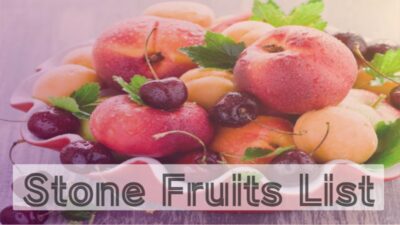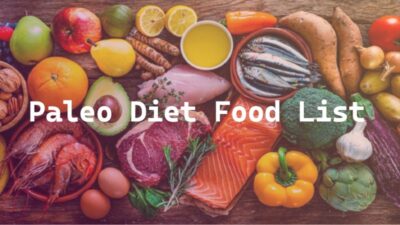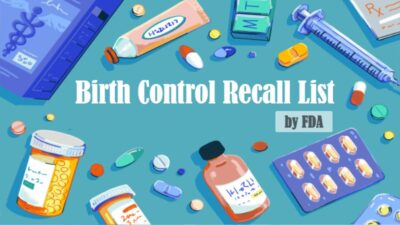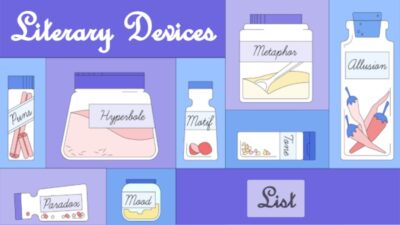
Iron is an important nutrient that people can only get through their diet, so check popular iron rich foods list to improve iron content in the body. You can know types of dietary iron and sources to get proper iron for your body and can even check how to improve iron absorption. In this article, we are also mentioning what would happen to human body in case of iron deficiency, so read this article till the end.
- 1 Popular Iron Rich Foods List (General)
- 1.1 Types of Dietary Iron – Categorized by Source
- 1.1.1 Heme Iron Sources (Non-veg Sources of Iron)
- 1.1.2 Non-Heme Iron Sources (Veg Sources of Iron)
- 1.2 Iron Rich Foods – Categorized into Fruits & Vegetables
- 1.2.1 Vegetables
- 1.2.2 Fruits
- 1.3 How to Improve Iron Absorption in Human Body
- 1.4 Major Health Benefits of Proper Iron in Human Body
- 1.5 Health Effects due to Iron Deficiency
It is worth noting that iron is found in animal based diets such as meat, poultry, fish as well as plant based diets like dry fruits, nuts, seeds, spinach etc. The amount of iron you need each day depends on one’s sex and age. Here is a list of iron rich foods that can help you meet your daily iron requirements.
Popular Iron Rich Foods List (General)
- Red meat: Beef, lamb, pork, veal, ham and liver are particularly rich in heme iron, which is easily absorbed by the body.
- Poultry: Chicken, turkey, eggs (any style) are good sources of heme iron as well.
- Seafood: Oysters, mussels, clams, shrimp, scallops, tuna, haddock, mackerel and sardines are high in iron content.
- Beans and legumes: Lentils, dried peas, chickpeas, kidney beans, black beans, and soybeans are excellent plant-based sources of iron.
- Tofu: This soy-based product is a good source of iron, especially when it’s made with iron salts.
- Spinach: Among leafy greens, spinach is one of the best sources of non-heme iron.
- Kale: Another iron-rich leafy green vegetable.
- Broccoli: This cruciferous vegetable contains a fair amount of iron.
- Fortified cereals: Certain breakfast cereals are enriched with iron to boost their nutritional content.
- Quinoa: This grain-like seed is a good source of iron and is suitable for gluten-free diets.
- Nuts and seeds: Pumpkin seeds, sunflower seeds, pine nuts, cashews, and almonds are some of the iron-rich options.
- Dried fruits: Raisins, apricots, prunes, and dried figs are dried fruits that contain significant amounts of iron.
- Dark chocolate: Dark chocolate with a high cocoa content can provide a decent amount of iron.
- Fortified bread and pasta: Some types of bread and pasta are fortified with iron.
Some other famous iron rich foods includes white bread (enriched), whole wheat bread, enriched pasta, wheat products, bran cereals, corn meal, oat cereal, cream of wheat, rye bread, enriched rice, tomato products (e.g., paste), corn syrup, maple syrup and molasses.
Types of Dietary Iron – Categorized by Source
There are two types of dietary iron: heme iron (found in animal products) and non-heme iron (found in plant-based sources).
Heme Iron Sources (Non-veg Sources of Iron)
- Beef (especially organ meats like liver)
- Lamb
- Pork
- Poultry (chicken, turkey)
- Fish (salmon, tuna, sardines)
- Shellfish (clams, mussels, oysters, shrimp)
Non-Heme Iron Sources (Veg Sources of Iron)
- Legumes (beans, lentils, chickpeas)
- Tofu
- Tempeh
- Soybeans
- Quinoa
- Spinach
- Kale
- Swiss chard
- Broccoli
- Collard greens
- Nuts and seeds (pumpkin seeds, sesame seeds, cashews)
- Fortified cereals and bread
- Dried fruits (raisins, apricots)
- Potatoes (with skin)
- Prune juice
Heme iron is better absorbed by the body, but combining non-heme iron sources with vitamin C-rich foods can enhance iron absorption. Additionally, avoid consuming iron-rich foods with calcium-rich foods, as calcium can inhibit iron absorption.
Iron Rich Foods – Categorized into Fruits & Vegetables
Vegetables
- Spinach
- Sweet potatoes
- Peas
- Broccoli
- String beans
- Beet greens
- Dandelion greens
- Collards
- Kale
- Chard
Fruits
- Strawberries
- Watermelon
- Raisins
- Dates
- Figs
- Prunes
- Prune juice
- Dried apricots
- Dried peaches
How to Improve Iron Absorption in Human Body
Improving iron absorption is essential to address iron deficiency and maintain healthy iron levels in the body. Here are some strategies to enhance iron absorption:
- Consume Iron-Rich Foods: Include foods that are high in heme iron (easily absorbed form of iron found in animal products) and non-heme iron (found in plant-based foods) in your diet. Good sources of heme iron include red meat, poultry, and fish, while non-heme iron can be found in beans, lentils, tofu, fortified cereals, spinach, and other leafy greens.
- Pair Iron with Vitamin C: Vitamin C enhances the absorption of non-heme iron. Consume foods rich in vitamin C, such as citrus fruits (oranges, lemons, grapefruits), strawberries, kiwi, tomatoes, bell peppers, and broccoli, along with iron-containing foods.
- Avoid Calcium and Tannins: Calcium and tannins (found in tea and coffee) can inhibit non-heme iron absorption. Try to avoid consuming calcium-rich foods or supplements and tea/coffee close to meals containing iron.
- Limit Phytates and Oxalates: Phytates (found in whole grains, legumes, and nuts) and oxalates (found in spinach, beet greens, and rhubarb) can bind to iron and reduce its absorption. While these foods are nutritious, it’s beneficial to balance them with other iron-rich foods and consume them at different meals.
- Cook in Cast Iron Cookware: Cooking acidic foods like tomatoes or sauces in cast iron cookware can help to increase the iron content of the food.
- Avoid Iron Antagonists with Iron Supplements: When taking iron supplements, avoid consuming calcium, tea, coffee, and high-fiber foods at the same time, as they may reduce iron absorption.
- Consider Cooking Techniques: Some cooking techniques can improve iron absorption. For instance, soaking and sprouting legumes and grains can reduce phytates, making iron more available.
- Balance Diet and Nutrient Timing: Aim for a balanced diet that includes a mix of iron-rich foods and other essential nutrients. Also, spacing out your iron-rich meals from meals rich in iron inhibitors can help improve overall absorption.
- Seek Medical Advice: If you have diagnosed iron deficiency anemia or suspect you may have low iron levels, consult with a healthcare professional. They can provide personalized recommendations on eating foods high in iron and may prescribe iron supplements if necessary.
Remember that while dietary changes can help improve iron absorption, severe iron deficiency anemia may require iron supplementation prescribed by a healthcare professional. Always follow their guidance to address any iron deficiency or related health concerns effectively.
Major Health Benefits of Proper Iron in Human Body
Here are some of the key health benefits of iron in the human body:-
- Oxygen Transport: As mentioned earlier, iron is a critical component of hemoglobin. It binds to oxygen in the lungs and transports it to body tissues and organs. Sufficient iron levels are essential for maintaining healthy oxygenation of cells and tissues, promoting energy production, and preventing fatigue.
- Energy Production: Iron is involved in the production of adenosine triphosphate (ATP), which is the primary energy currency of the cells. Sufficient iron levels support efficient energy metabolism and help combat feelings of weakness and lethargy.
- Immune Function: Iron plays a role in the proper functioning of the immune system. It is necessary for the proliferation and maturation of immune cells, including lymphocytes and macrophages, which are crucial for defending the body against infections and diseases.
- Brain Function: Iron is involved in cognitive processes and the development of the brain. Sufficient iron levels are particularly important during early childhood and pregnancy to support proper brain growth and function.
- Temperature Regulation: Iron contributes to thermoregulation by aiding in the release and utilization of heat in the body. This helps to maintain a stable body temperature, especially during periods of increased physical activity or exposure to cold environments.
- DNA Synthesis and Repair: Iron is essential for the synthesis and repair of DNA, the genetic material in cells. This process is critical for cell division and growth, making iron crucial for overall development and healing.
- Enzyme Activity: Many enzymes in the body require iron as a cofactor for their proper functioning. These enzymes are involved in various biochemical reactions, such as DNA synthesis, energy production, and detoxification.
- Detoxification: Iron is involved in the breakdown of certain harmful substances in the body, contributing to detoxification processes and reducing oxidative stress.
Health Effects due to Iron Deficiency
Iron deficiency can lead to various health problems and complications due to the essential role iron plays in the body. Iron is a critical component of hemoglobin, a protein in red blood cells that carries oxygen from the lungs to all body tissues. When iron levels are insufficient, the body cannot produce enough healthy red blood cells, leading to a condition known as iron deficiency anemia. Here are some common consequences of iron deficiency:-
- Anemia: As mentioned earlier, iron deficiency can lead to anemia, which causes fatigue, weakness, paleness, and shortness of breath. Anemic individuals may have difficulty carrying out physical activities and may feel lethargic.
- Impaired Cognitive Function: Iron deficiency can affect cognitive function and may lead to decreased concentration, memory problems, and difficulty in learning.
- Weak Immune System: Iron is essential for the proper functioning of the immune system. A deficiency can make individuals more susceptible to infections and may reduce the body’s ability to fight off illnesses.
- Pica: Some individuals with iron deficiency may develop a condition called pica, where they crave non-food items like ice, dirt, or clay. This behavior is an abnormal response to the deficiency.
- Restless Leg Syndrome (RLS): RLS is a condition characterized by an irresistible urge to move the legs, often accompanied by uncomfortable sensations. Iron deficiency has been linked to an increased risk of RLS.
- Brittle Nails and Hair Loss: Insufficient iron levels can result in brittle nails that may have ridges or become concave (koilonychia). Additionally, it can contribute to hair loss or thinning.
- Delayed Growth and Development in Children: Iron deficiency in children can hinder proper growth and development, both physically and mentally.
- Cardiovascular Complications: Severe or prolonged iron deficiency can lead to an increased risk of cardiovascular problems as the heart has to work harder to supply oxygen to the body’s tissues.
It’s important to note that iron deficiency can have different causes, including inadequate dietary intake, poor absorption of iron from the diet, increased iron requirements (e.g., during pregnancy), or blood loss (due to menstruation or other reasons).
If you suspect you have iron deficiency or are experiencing any symptoms mentioned above, it’s essential to consult a healthcare professional for proper evaluation and management. They can conduct blood tests and provide appropriate treatment or dietary recommendations to address the deficiency.










